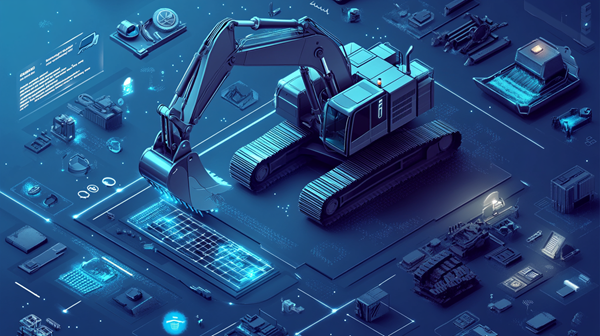Protect your capital equipment investment with lifecycle insurance. See how the right cover preserves residual value, supports resale, and strengthens your asset strategy in Australia.
Key takeaways
- Residual value protection: Well-structured equipment insurance can safeguard up to 30% of your asset’s residual trade-in value by minimising loss through damage or theft.
- Lifecycle extension: Businesses that integrate insurance with lifecycle management report 15-20% longer equipment use, optimising return on investment (ROI).
- Cost mitigation: Repair and replacement insurance policies reduce unexpected capital outlays, helping preserve your cash flow and improve financing terms.
- Compliance & resale: Insurance facilitates compliance with Australian workplace safety laws, which is critical to maintaining equipment resale value.
- Market trends: With Australian equipment insurance premiums rising by an average of 8.5% annually over the past 3 years, strategic insurance decisions are crucial to controlling ongoing costs.
- FAQ highlights: Common concerns include how insurance affects trade-in negotiations, types of policies best suited to lifecycle management, and how claims impact future premiums.
Introduction
If you’re an Australian business owner or asset manager, you know capital equipment is often one of your biggest investments. Whether it’s heavy machinery on a construction site, specialised medical devices, or industrial manufacturing equipment, protecting these assets throughout their lifecycle is essential. But beyond just safeguarding your operations day-to-day, insurance plays a crucial role in preserving your equipment’s residual value—the amount you can recover when it’s time to trade in or sell.
In this article, we’ll break down how insurance impacts equipment lifecycle management, why protecting your residual and trade-in value matters more than ever in the current Australian market, and what practical steps you can take to ensure your equipment investment pays off for the long haul.
What is equipment lifecycle management?
Equipment lifecycle management (ELM) refers to the strategic approach businesses use to optimise the acquisition, use, maintenance, and disposal of their capital assets. It covers every phase, from purchase through operational use to final trade-in or sale.
Key objectives of ELM include:
- Maximising operational uptime and efficiency
- Minimising total cost of ownership (TCO)
- Preserving asset value for future resale or trade-in
- Ensuring compliance with safety and regulatory requirements
Insurance is often overlooked in ELM, but it’s a critical tool that supports all these goals by managing financial risk throughout the asset’s life.
How insurance protects residual value and trade-in assets
1. Minimising depreciation through damage protection
Physical damage—whether from accidents, natural disasters, or vandalism—can dramatically accelerate the depreciation of your equipment. According to data from the Australian Bureau of Statistics, machinery and equipment losses due to accidental damage can reduce asset value by up to 30% immediately.
By maintaining comprehensive insurance coverage that includes accidental damage and theft protection, you reduce the likelihood of significant write-offs or forced early replacements, helping preserve your equipment’s condition and residual value.
2. Facilitating timely repairs and maintenance
Insurance policies that cover repairs help you access quality service providers quickly without bearing the full upfront cost. This reduces downtime and keeps your equipment in prime condition, which is essential for maximising trade-in offers. A 2024 survey by IBISWorld found that Australian businesses that combine insurance with proactive maintenance spend 15-20% less on unexpected repairs over their asset’s lifespan.
3. Supporting compliance and safety standards
Compliance with Australian workplace health and safety regulations (such as Work Health and Safety Act 2011) often requires maintaining equipment to specific standards. Insurance policies can be structured to include safety audits or condition assessments, which ensure equipment remains compliant. This compliance protects resale or trade-in value by demonstrating to buyers or financiers that the asset has been responsibly managed.
Why residual value matters for Australian businesses
Your equipment’s residual value is critical because it:
- Represents potential capital recovery when trading or selling assets
- Influences depreciation schedules and tax benefits
- Affects your ability to secure favourable financing terms (lenders often assess residual value)
- Provides a buffer to reduce overall replacement costs
In Australia’s current market, where capital equipment prices have increased by an average of 5-7% annually over the past five years (source: Australian Industry Group), preserving residual value through insurance and lifecycle management can significantly improve your total cost of ownership.
Insurance options that support equipment lifecycle management
Here’s a quick rundown of specialist insurance products that can help you preserve the value of your equipment throughout its lifecycle:
- All-risk equipment insurance – Covers physical damage, theft, and accidental loss. This type of policy helps minimise unexpected depreciation by ensuring damaged or stolen equipment doesn’t lead to a permanent loss in value.
- Business interruption insurance – Steps in to cover income loss when your equipment is out of action. It supports your cash flow while you handle repairs or replacements, helping you avoid cutting corners that could reduce long-term asset value.
- Liability insurance – Provides protection if your equipment causes injury or property damage to third parties. It shields your business from costly legal claims that can drain resources and damage your reputation.
- Maintenance insurance add-ons – Offers cover for scheduled servicing and essential repairs. Keeping your equipment properly maintained not only reduces downtime but also helps preserve its resale or trade-in value.
- Trade-in gap insurance – Covers any shortfall between your equipment’s trade-in or resale value and the remaining loan balance. This helps protect your equity when it’s time to upgrade or offload the asset.
Practical tips for using insurance to maximise equipment lifecycle value
- Review your insurance annually
Equipment conditions and market values change. Regularly reassess your policy limits and coverage scope to ensure your protection matches your equipment’s current value and operational risks. - Document maintenance and repairs carefully
Keeping detailed records helps when you make insurance claims and also proves your equipment’s upkeep to potential buyers, supporting stronger trade-in negotiations. - Choose policies with flexible coverage and add-ons
Look for insurance providers offering customisable policies tailored to your industry and asset type, including options for maintenance coverage or trade-in gap protection. - Work with brokers knowledgeable in Australian regulations and markets
An insurance broker with expertise in local industry conditions can help you find competitive premiums and policies aligned with lifecycle goals.
The Australian insurance market outlook for equipment owners
Premiums for commercial equipment insurance in Australia have risen approximately 8.5% annually over the last 3 years (source: Insurance Council of Australia). Factors driving increases include:
- Rising replacement equipment costs due to inflation and supply chain disruptions
- Increased claims frequency from extreme weather events linked to climate change
- Growing cyber risk exposure as equipment becomes more digitally connected
This trend means your insurance choices must be strategic—balancing comprehensive coverage with cost control. Failing to adequately insure your equipment risks significant financial loss, while over-insuring can drain cash flow.
FAQs on insurance and equipment lifecycle management
Q: Does insurance affect my equipment’s resale or trade-in price?
While insurance doesn’t directly set resale prices, maintaining comprehensive coverage protects your asset’s condition and ensures timely repairs, which positively influences buyer perceptions and trade-in offers.
Q: Can I insure leased equipment, and does it impact residual value?
Yes, leased equipment can and should be insured. Proper insurance ensures the leased asset remains in good condition, protecting your business from penalties and helping you negotiate better lease-end options.
Q: What happens if I make multiple claims? Will my premiums increase?
Frequent claims can lead to premium increases or policy restrictions. It’s best to use insurance strategically for major risks while investing in preventative maintenance to minimise claims.
Q: Is trade-in gap insurance worth it?
If you finance equipment with loans or leases, gap insurance can protect you from owing more than the asset’s trade-in or resale value, preventing unexpected out-of-pocket costs.
Q: How do I prove to insurers that my equipment is well-maintained?
Maintain detailed service logs, inspection reports, and photographic evidence. Many insurers offer better premiums for documented, proactive maintenance.
Conclusion
Your equipment is a cornerstone of your business, and protecting its value across its lifecycle is essential for maintaining profitability and operational resilience. In the current Australian market, where equipment costs and insurance premiums are rising, leveraging insurance strategically as part of your lifecycle management can safeguard your residual value, reduce unexpected expenses, and improve financing outcomes.
By understanding how insurance interacts with equipment condition, compliance, and trade-in value, you’re not just protecting your assets—you’re maximising the return on your investment over time.
Take control today by reviewing your insurance policies, documenting maintenance rigorously, and partnering with expert brokers to build a tailored insurance strategy that supports your equipment’s full lifecycle journey.


